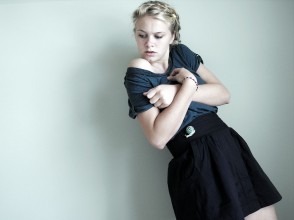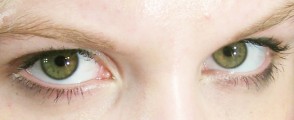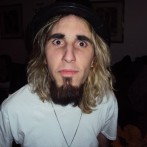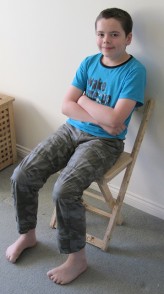Body Language Tips You Should Know Before Jury Selection
 As most litigators understand, jury selection is possibly the most important part of a trial case. By the time trial commences, a good attorney has spent a considerable amount of time thinking about the questions he or she will ask potential panel members, has pored over jury pool lists if available, has drafted carefully-thought-out juror questionnaires, and has drafted questions most appropriate to the particular case.
As most litigators understand, jury selection is possibly the most important part of a trial case. By the time trial commences, a good attorney has spent a considerable amount of time thinking about the questions he or she will ask potential panel members, has pored over jury pool lists if available, has drafted carefully-thought-out juror questionnaires, and has drafted questions most appropriate to the particular case.
The permissible purposes of jury selection are two-fold:
- First, an attorney wants to make certain he or she selects the best possible jury panel for his or her client’s case by determining which potential jurors should be eliminated for cause.
- Second, jury selection allows an attorney to gather information so he or she can intelligently exercise peremptory challenges. Understanding what potential jurors are truly communicating can be crucial to the outcome of a case.
Many attorneys, however, spend voir dire writing notes in shorthand, and fail to recognize nonverbal cues that indicate much more than the words a potential juror speaks out loud.
Recognizing and understanding nonverbal communication is vital during jury selection, as up to 93% of all communication is nonverbal. Failing to recognize these cues leads to a less than accurate assessment of whether a particular potential juror will be a good member of a jury for a client’s case. This article will focus on those categories of nonverbal cues that indicate bias and should lead to for cause challenges to their selection. Nonverbal indicators that should lead to the intelligent exercise of peremptory challenges will be covered in another article.
NONVERBAL CUES INDICATING BIAS DURING JURY SELECTION
1. Eye contact/ Facial indicators
- Looks to other attorney or judge for approval when answering your questions
- Staring at you/your client
- Lack of smiling at you/your client
- Lack of eye contact with you/your client
- Frequent eye contact with other attorney/ smiling
- Frowning, furrowed eyebrows
2. Body indicators
- Closed body posture when speaking
- Tone of voice when answering questions (changes in pitch)
- Open body posture when answering other attorney’s questions
- Leaning back in chair with crossed arms (i.e. physically moving away) while answering your questions
Even prior to questioning potential jurors, watch how they act from the moment their name is called. Attorneys are constantly multitasking, and if it is difficult for you to do this, it is fine to have your client help watch for cues and note them for you.
Eye Contact
During jury selection, watch to see if individual jurors are constantly attempting to gain eye contact with opposing counsel, frequently smiling in their direction, and failing to do the same with you and your client. When you are questioning a potential juror, look at where they direct their eye contact when answering your question. If an individual consistently pauses briefly and glances at the other attorney or at the judge before answering, this is an indication that the individual is unconsciously seeking the other attorney’s approval and could be an indicator of bias toward either you or your client.
 Note anyone who stares toward you or your client, especially if combined with a lack of smiling, frowning, or furrowed eyebrows. In the context of social psychology, staring can be an indication of aggression or hostility, and if a potential juror is exhibiting such behavior, questioning should be focused on eliciting the bias in order to develop a constitutional for-cause challenge.
Note anyone who stares toward you or your client, especially if combined with a lack of smiling, frowning, or furrowed eyebrows. In the context of social psychology, staring can be an indication of aggression or hostility, and if a potential juror is exhibiting such behavior, questioning should be focused on eliciting the bias in order to develop a constitutional for-cause challenge.
 Some people do not have good eye contact generally. A shy person may tend to look down and speak softly. However, if someone is biased, he or she will most likely look anywhere in the room instead of at you when answering questions. This is a very obvious cue and should never be missed.
Some people do not have good eye contact generally. A shy person may tend to look down and speak softly. However, if someone is biased, he or she will most likely look anywhere in the room instead of at you when answering questions. This is a very obvious cue and should never be missed.
 Finally, if a potential juror is frowning at an attorney or an attorney’s client, especially with furrowed eyebrows, bias toward that party’s position or case is evident.
Finally, if a potential juror is frowning at an attorney or an attorney’s client, especially with furrowed eyebrows, bias toward that party’s position or case is evident.
Posture
 Potential jurors’ posture while answering questions during jury selection is important. Leaning back in their seat when answering or turning the body slightly away are subconscious ways for a person to create distance and indicates hostility. Closed body posture (i.e. folded arms and legs, small movements if they use hands while speaking with limbs held close to the body), is also a nonverbal indication that the person is closed off to your case. Finally, changes in tone while answering questions, for instance, flattening of the voice or raising the pitch, are indicators of annoyance and potential bias.
Potential jurors’ posture while answering questions during jury selection is important. Leaning back in their seat when answering or turning the body slightly away are subconscious ways for a person to create distance and indicates hostility. Closed body posture (i.e. folded arms and legs, small movements if they use hands while speaking with limbs held close to the body), is also a nonverbal indication that the person is closed off to your case. Finally, changes in tone while answering questions, for instance, flattening of the voice or raising the pitch, are indicators of annoyance and potential bias.
Summary
This is obviously not a complete list of bias-indicating nonverbal cues, but should give an attorney a good base to build upon as the attorney learns to recognize common nonverbal indicators. Here’s a 2-minute video that can gives a more general perspective of how to read body language. If a person is showing signs of bias, the attorney’s job is then to focus questions specifically designed to draw out the bias so the attorney can develop the for-cause challenge.

Comments
I didn’t know that something as simple as posture can sway or distance potential jurors from being selected. Thanks for your tip about how folding your arms and crossing your legs make you seem uninterested in someone’s case as well. If someone was interested in the jury selection process, I would assume that they would consider this post.
Leave a Reply